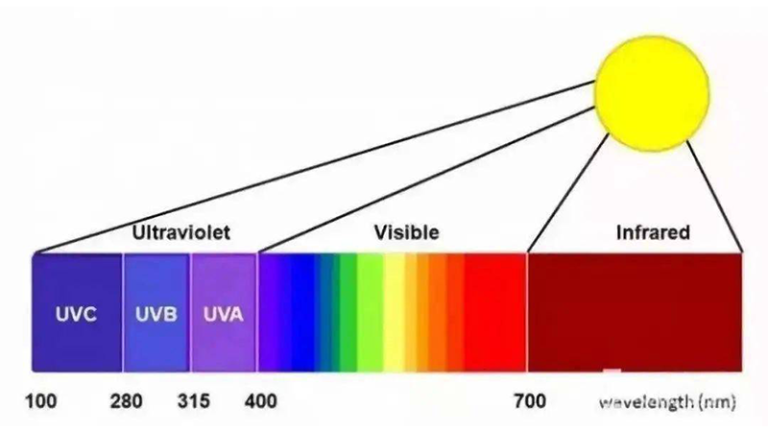
Do gadgets emit UV rays? This is a crucial question for anyone who spends significant time using smartphones, tablets, or other electronic devices. While the widespread assumption might be yes, the truth is more nuanced. Understanding the scientific principles behind UV radiation and how gadgets interact with it is key to making informed decisions about technology use and safeguarding your well-being. This article dives into the specifics of UV emission from common gadgets, analyzing the science behind these emissions and offering practical advice for safe use. We’ll explore various types of devices, how UV exposure might affect users, and what precautions you can take.
Understanding UV Radiation
What are UV Rays?
Ultraviolet (UV) radiation is a type of electromagnetic radiation with wavelengths shorter than visible light. It’s categorized into three types: UVA, UVB, and UVC. UVA is the most prevalent type, penetrating deep into the skin and contributing to premature aging and potential long-term health risks. While UVB is linked to sunburns, UVC is absorbed by the atmosphere and poses little risk to us on Earth.
Natural Sources of UV Radiation
The primary source of UV radiation is the sun. Sunlight contains all three types, with UVA being the dominant contributor. Other natural sources are less significant. Understanding natural UV radiation exposure is vital for putting the potential UV radiation from gadgets in perspective.
Gadget Components and UV Emission
Screen Technologies
Most gadgets with screens utilize LCD or OLED technology. These technologies themselves don’t emit significant amounts of UV radiation. The emission spectrum is primarily in the visible light and near-infrared (NIR) range.
Potential Indirect Emission
While the screens themselves typically do not directly emit UV rays, certain components within the device might contribute to minor UV emission indirectly, but usually at very low levels. The emissions from these components are often filtered or shielded.
Specific Materials
Certain materials used in gadget construction can, theoretically, produce UV light under specific conditions and at low levels, but the impact of this is often negligible.
Health Implications of UV Exposure
Skin Damage
Prolonged exposure to UV radiation, particularly UVA, can lead to premature skin aging, increased risk of wrinkles, and potentially contribute to skin cancer. Understanding your daily exposure to UV is essential for safeguarding your skin health.
Eye Damage
UV radiation can also damage the eyes. While not often a direct concern from gadget use, prolonged exposure to bright screens can lead to eye strain and potential long-term problems. The effects of UV exposure on vision vary depending on the type of UV light, the intensity of the source, and the length of exposure.
Safety Measures and Precautions
Screen Brightness and Distance
Adjusting screen brightness and maintaining an appropriate viewing distance can reduce eye strain and potential exposure concerns from visible light and other forms of radiation.
UV Filters and Protective Glasses
For those concerned, additional UV filters are sometimes available for devices or other protective measures can mitigate any potential health effects related to screen exposure. However, there are very few instances where this would be deemed necessary.
General Health Considerations
Maintaining a balanced lifestyle, including sufficient rest and proper hydration, can play a vital role in overall health and resilience. This is important when considering exposure levels from any source, not just gadgets.
Comparing Different Gadget Types
Smartphones and Tablets
Smartphones and tablets, with their bright screens, often raise concerns regarding UV exposure. However, the actual UV emission levels are generally minimal and pose little risk for most users. Using common-sense precautions like limiting screen time and adjusting brightness helps mitigate any potential effects.
LED Lamps and Light Sources
Some gadgets use LED lighting; the UV emission from these is often negligible. Proper shielding of the light sources helps to prevent issues related to UV exposure.
Conclusion Summary
In summary, the extent to which gadgets emit UV rays, while a concern for some users, is usually quite minimal and unlikely to cause significant health problems. The overall exposure levels typically remain below significant health risk levels.
Frequently Asked Questions
Q1: Do smartphones emit harmful UV rays?
A1: Modern smartphones and tablets, for the most part, do not emit substantial amounts of harmful UV rays. The technologies used for screen displays produce negligible UV emissions. While minor amounts of UV light might be present, it’s usually at levels far below levels that cause significant health risks.
Q2: Are there specific circumstances where gadgets might emit more UV rays?
A2: Specific circumstances, such as certain types of faulty components or prolonged use with the device’s internal temperature significantly elevated, might slightly increase UV output. However, these scenarios remain relatively uncommon. Typical usage levels of gadgets do not usually raise significant safety concerns.
Q3: What are some precautions I can take to minimize any potential UV exposure from gadgets?
A3: To minimize any potential UV exposure, you should consider adjusting the screen brightness for reduced eye strain. Maintaining appropriate viewing distances and limiting prolonged use are helpful strategies. The general health practices, like rest and hydration, also reduce the impact of any potential UV exposure from any source.
In conclusion, understanding if gadgets emit UV rays is crucial for informed consumer choices and personal well-being. While most devices do not emit significant levels, certain situations—like prolonged use or specific components—may warrant further investigation. By considering the sources and types of UV emissions, you can make informed decisions about your technology use and protect your health. For a deeper understanding of UV radiation safety, consult reliable resources or your healthcare professional. Learn more about the science of UV radiation and its impact on various devices.